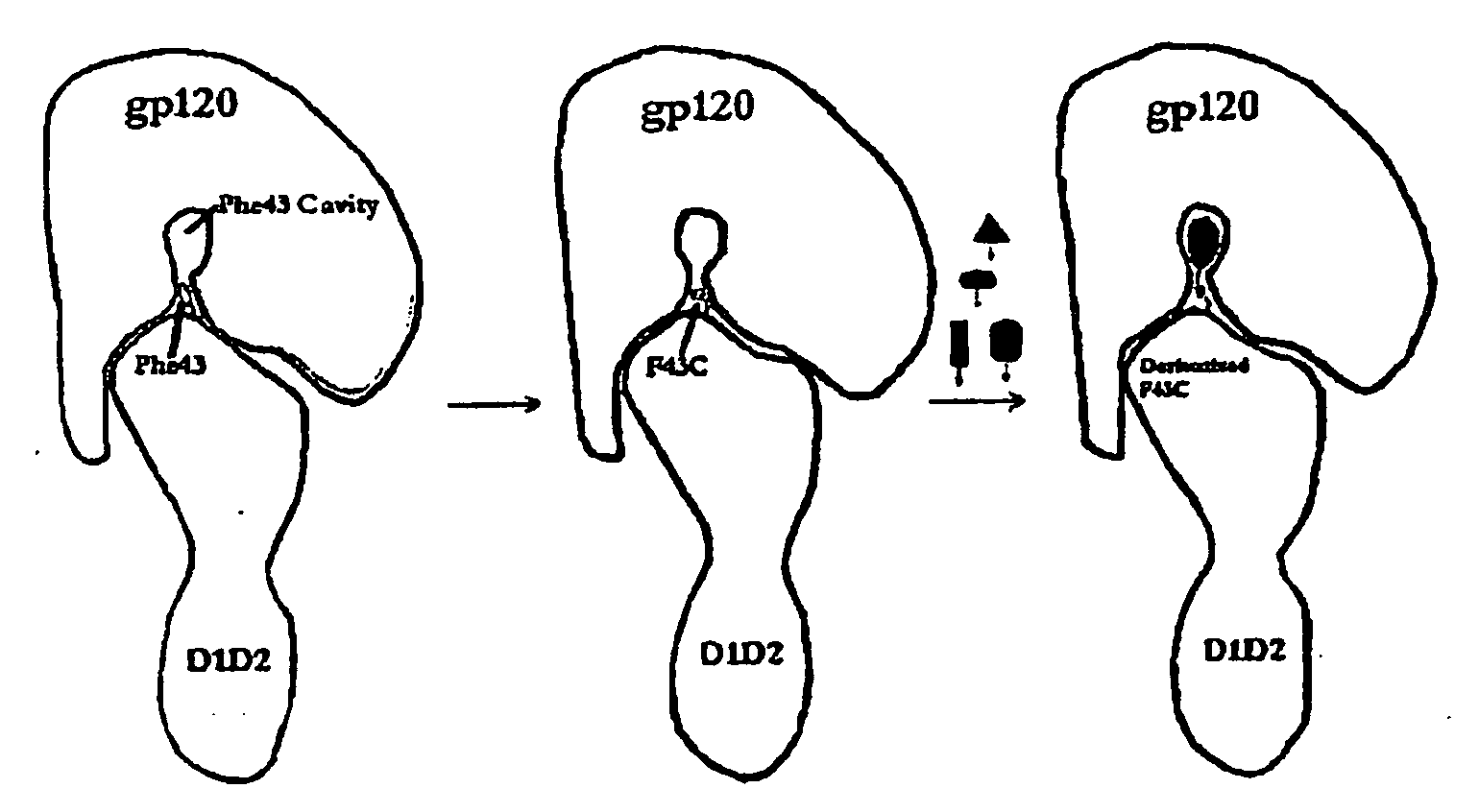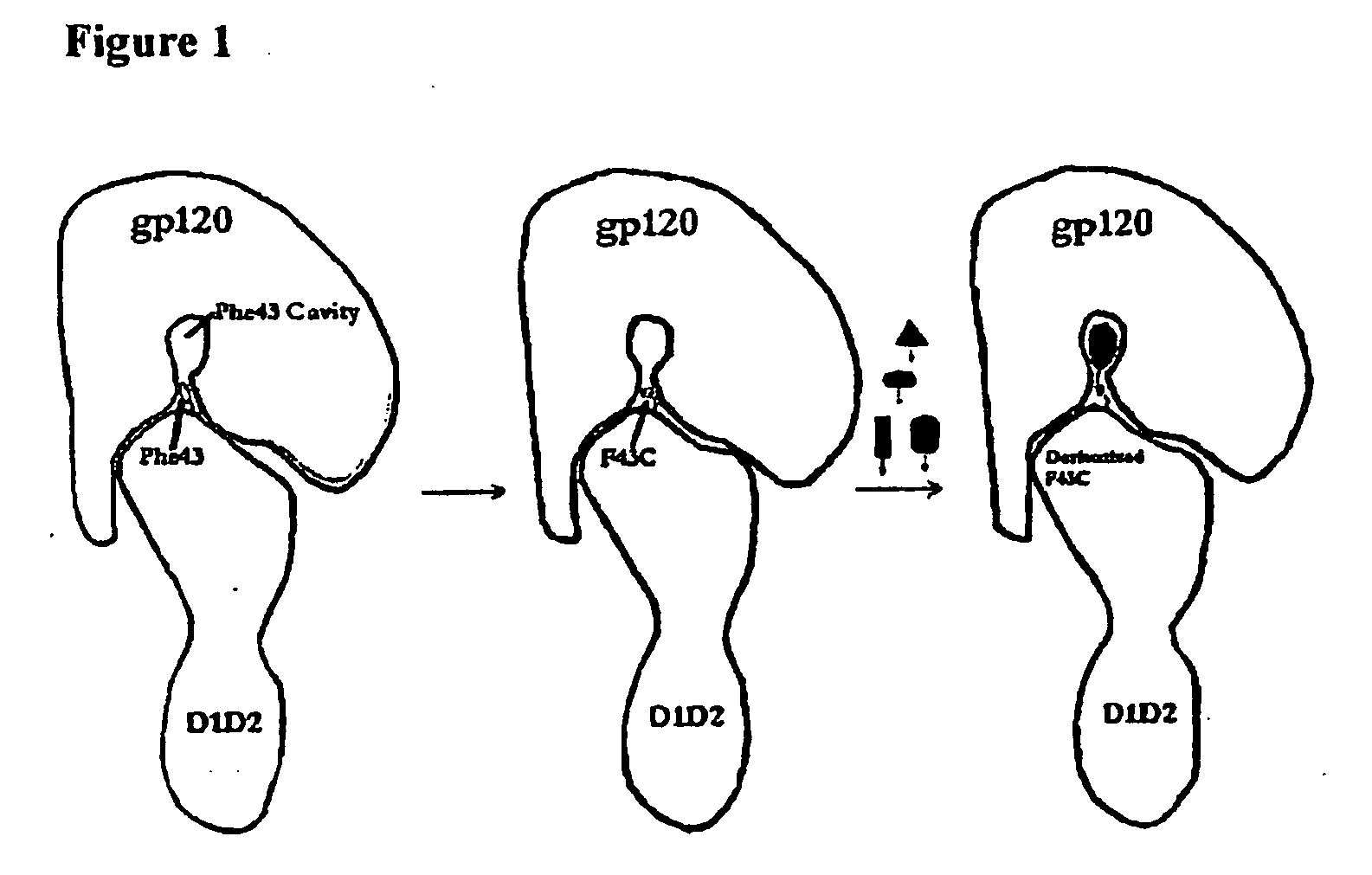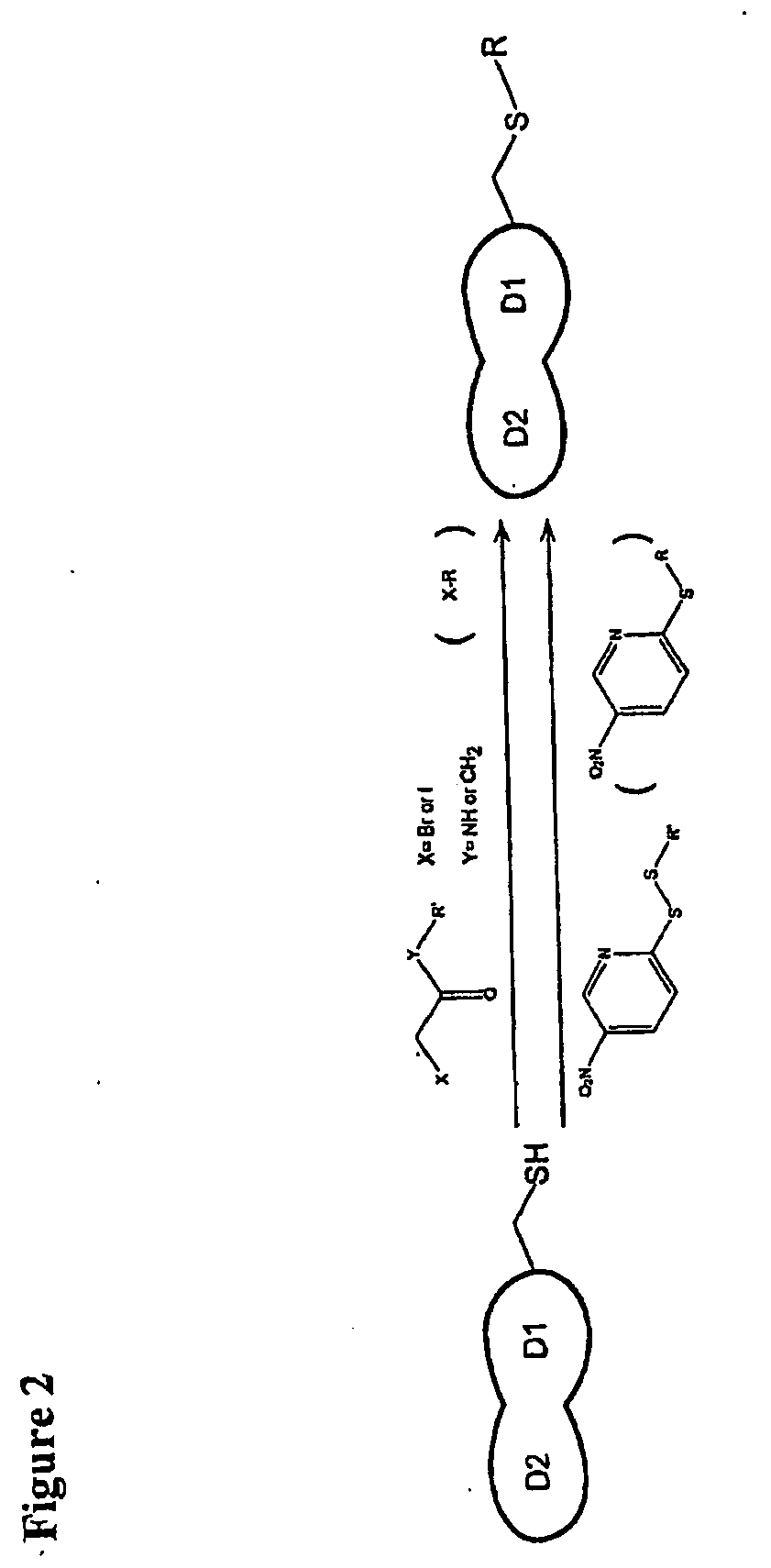Chemically Derivatized CD4 and Uses Thereof
- Summary
- Abstract
- Description
- Claims
- Application Information
AI Technical Summary
Benefits of technology
Problems solved by technology
Method used
Image
Examples
example i
Synopsis of Features of the Invention
[0105]Crystal structures of complexes between HIV gp120 envelope glycoproteins and the cellular receptor CD4 defined their high-affinity (nM level) interaction at an atomic level. This includes a cavity in the interface near CD4 residue phenylalanine 43 (Phe43) at the center of the interface. Although HIV proteins mutate readily to escape the immune system, determinants of the unique and specific interaction with human CD4 are preserved. Subsequent thermodynamic and spectroscopic studies showed that large conformational changes occur in gp120 upon CD4 binding, suggesting that epitopes for CD4 binding are hidden from the immune system in apo gp120. It would be desirable to develop inhibitors that compete effectively with HIV sites for CD4 binding, but the exceptional flexibility of gp120 complicates lead identification. High-throughput screens have had little success in this system.
[0106]We have devised a method for identifying chemical leads for ...
example ii
Structure-Activity Relationships in the Binding of Chemically Derivatized CD4 to HIV gp120
Synopsis
[0108]Recognition of the HIV envelope protein gp120 by the host cell receptor CD4 is the first step in HIV infection. An interfacial “Phe43 cavity” in gp120, close to where the CD4 residue Phe43 is bound, has been suggested as a potential target for therapeutic intervention. Because this cavity is unique to CD4-bound gp120, we designed and prepared a two domain CD4 template with Phe43 mutated to the chemoselective cysteine residue for site-specific coupling of chemically diverse compounds for screening against the Phe43 cavity. A library of haloacetamides and 5-nitro-2-pyridyldisulfides were selected and synthesized for modification of the reactive cysteine on CD4. Among them, 2-Bromo-N-(4-nitro-phenyl)-acetamide (compound DN-052) produced a CD4 derivative with highest affinity in binding gp120 (IC50=4.14 nM). The structure-activity relationship (SAR) study of derivatized CD4 binding to...
example iii
Derivatized CD4 Molecules as Improved Therapeutic Agents
[0211]The method that we have described for identifying chemical leads for inhibition of the gp120-CD4 interaction has already produced several derivatized CD4 analogs that bind to HIV gp120 as well or better than natural human CD4. Various constructs based on human CD4 have been shown to be efficacious (e.g. CD4-IgG2 and dodecameric CD4-Ig), even in clinical trials, and it can be expected that such constructs modified to incorporate the very same modifications that we have introduced by reacting D1D2F43C with certain of our bromoacetamides or 5-nitro-2-pyridyldisulfides (e.g. SNS-10, SNS-12, SNS-14, DN-52 and DN-234) might themselves be expected to have better therapeutic efficacy than the parent therapeutic CD4 in treating neonates of HIV-infected mothers and newly HIV-infected medical workers (needle pricks).
[0212]The incorporation of our derivatives into an already developed CD4 product would require the following additiona...
PUM
| Property | Measurement | Unit |
|---|---|---|
| Solubility (mass) | aaaaa | aaaaa |
| Affinity | aaaaa | aaaaa |
Abstract
Description
Claims
Application Information
 Login to view more
Login to view more - R&D Engineer
- R&D Manager
- IP Professional
- Industry Leading Data Capabilities
- Powerful AI technology
- Patent DNA Extraction
Browse by: Latest US Patents, China's latest patents, Technical Efficacy Thesaurus, Application Domain, Technology Topic.
© 2024 PatSnap. All rights reserved.Legal|Privacy policy|Modern Slavery Act Transparency Statement|Sitemap



